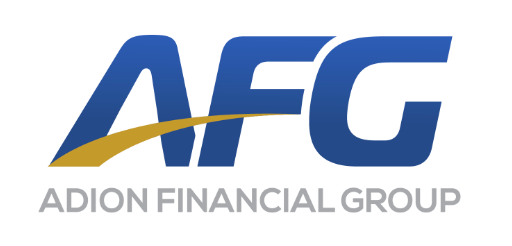
Top 3 Recommended Policies
Home insurance is an essential aspect of homeownership, providing financial protection against unforeseen events. In New Milford, Connecticut, understanding the nuances of home insurance can help homeowners make informed decisions. This article delves into everything you need to know about home insurance in New Milford, from coverage options to local regulations.
Understanding Home Insurance Basics
Home insurance is designed to protect homeowners from various risks, including damage to the property and liability for injuries that occur on the premises. It typically covers the structure of the home, personal belongings, and additional living expenses in case the home becomes uninhabitable due to a covered event. Home insurance not only provides peace of mind but also plays a crucial role in safeguarding your financial investment. With the right policy, homeowners can rest assured that they are protected against unforeseen circumstances that could lead to significant financial loss.
Types of Coverage
There are several types of coverage included in a standard home insurance policy. The most common categories are:
- Dwelling Coverage: This covers the physical structure of the home, including walls, roof, and built-in appliances.
- Personal Property Coverage: This protects personal belongings such as furniture, electronics, and clothing from risks like theft or damage.
- Liability Coverage: This offers protection against legal claims for injuries or property damage that occur on your property.
- Additional Living Expenses: If your home is uninhabitable due to a covered loss, this coverage helps pay for temporary housing and other living expenses.
In addition to these standard coverages, many insurance providers offer optional endorsements or riders that can enhance your policy. For instance, you might consider adding coverage for valuable items such as jewelry or art, which may exceed the limits of standard personal property coverage. Additionally, some policies allow for increased liability limits or coverage for home-based businesses, providing extra protection for those who operate a business from their residence.
Exclusions to Consider
While home insurance provides valuable coverage, it is essential to be aware of what is not included in a standard policy. Common exclusions include:
- Flood Damage: Most home insurance policies do not cover flood damage, which may require separate flood insurance.
- Earthquake Damage: Similar to floods, earthquake damage often requires a separate policy or endorsement.
- Wear and Tear: Regular maintenance issues and wear and tear are typically not covered.
Understanding these exclusions is vital for homeowners, as it allows them to make informed decisions about additional coverage they may need. For example, if you live in an area prone to flooding or earthquakes, seeking specialized insurance can be a wise investment. Furthermore, homeowners should regularly review their policies to ensure they are adequately covered for any changes in their living situation or the value of their possessions, as this can help prevent gaps in coverage that might leave them vulnerable in the event of a loss.

Factors Affecting Home Insurance Rates in New Milford
Several factors influence the cost of home insurance premiums in New Milford. Understanding these can help homeowners find the best coverage at an affordable price.
Location and Risk Assessment
The geographical location of a home plays a significant role in determining insurance rates. Areas prone to natural disasters, such as floods or hurricanes, may have higher premiums. New Milford, being situated near water bodies, may have specific risks that insurers consider when calculating rates. Additionally, the local crime rate can also affect premiums; neighborhoods with higher instances of theft or vandalism may see increased insurance costs as insurers factor in the likelihood of claims.
Home Characteristics
Insurance companies also assess the characteristics of the home itself. Factors such as:
- Age of the home
- Construction materials
- Safety features (like smoke detectors and security systems)
can all affect the premium. Newer homes with modern safety features may qualify for discounts, while older homes may incur higher rates due to potential risks. Furthermore, the layout and size of the home can also play a role; larger homes may have higher replacement costs, which can lead to increased premiums. Homeowners might consider making upgrades or renovations that not only enhance their living space but also improve their insurance profile.
Claims History
A homeowner’s claims history can significantly impact insurance rates. If a homeowner has a history of filing multiple claims, insurers may view them as a higher risk, leading to increased premiums. Conversely, a clean claims history can help secure lower rates. It's also worth noting that certain types of claims, such as those related to water damage or liability, can weigh more heavily in rate calculations. Homeowners should be mindful of the impact of minor claims on their long-term insurance costs, as even small claims can contribute to a perception of risk that affects future premiums.
Finding the Right Home Insurance Provider
Choosing the right insurance provider is crucial for ensuring adequate coverage and customer service. Here are some steps to help navigate the selection process.
Research and Compare Quotes
Start by researching various insurance companies that operate in New Milford. Gather quotes from multiple providers to compare coverage options and premiums. Many insurers offer online tools that allow homeowners to input their information and receive instant quotes. It’s also beneficial to take note of any discounts that may be available, such as those for bundling policies or having security systems installed. By being thorough in this step, you can ensure that you are not only getting the best price but also the most comprehensive coverage tailored to your needs.
Check Financial Stability and Reviews
Before making a decision, it’s essential to assess the financial stability of the insurance company. Look for ratings from independent agencies like A.M. Best or Standard & Poor’s. Additionally, reading customer reviews can provide insights into the company’s claims process and customer service quality. Pay attention to recurring themes in the reviews, such as responsiveness during claims or ease of communication, as these factors can significantly impact your experience during stressful times. A provider with a solid reputation and positive feedback can offer peace of mind that they will be there when you need them most.
Consult Local Agents
Local insurance agents can be invaluable resources. They understand the specific needs and risks associated with homes in New Milford. An agent can help tailor a policy that meets individual requirements and explain any local regulations that may affect coverage. Moreover, they can provide insights into common claims in the area, such as those related to flooding or severe weather, which can be particularly relevant for homeowners. By leveraging their expertise, you can make informed decisions that align with both your budget and your home’s unique characteristics.
Additionally, local agents often have established relationships with the insurance companies they represent, which can lead to more personalized service. They can assist in navigating the paperwork and help clarify any confusing terms or conditions in your policy. This level of support can be especially beneficial for first-time homeowners who may feel overwhelmed by the complexities of insurance. Engaging with an agent who is familiar with the New Milford market can provide tailored advice that online tools simply cannot match.
Common Home Insurance Discounts
Many insurance providers offer discounts that can help lower premiums. Homeowners should inquire about the following common discounts:
Bundling Policies
One of the most significant discounts available is bundling home insurance with other policies, such as auto insurance. This can lead to substantial savings, as many insurers offer multi-policy discounts. By consolidating multiple insurance needs under one provider, homeowners not only save money but also simplify their insurance management. Additionally, some companies may offer loyalty rewards for long-term customers who maintain bundled policies, further enhancing the value of this option.
Safety Features
Installing safety features in the home, such as security systems, smoke detectors, and fire alarms, can also qualify homeowners for discounts. Insurers appreciate these features as they reduce the risk of claims. Furthermore, modern advancements in home technology, like smart home devices that monitor security and environmental hazards, can also lead to additional savings. Homeowners who invest in these technologies not only protect their property but may also enjoy lower premiums as a result of their proactive approach to safety.
Claims-Free Discounts
Some insurance companies reward homeowners who have not filed any claims within a specific period with discounts on their premiums. This encourages policyholders to maintain their homes and avoid unnecessary claims. Moreover, maintaining a claims-free record can also enhance a homeowner's overall insurability, potentially leading to better rates in the future. It's worth noting that some insurers may offer additional incentives for long-term claims-free periods, such as increasing discount percentages or providing a one-time bonus for reaching a milestone, like five years without a claim.

Understanding the Claims Process
Knowing how to navigate the claims process is crucial for homeowners. In the event of a loss, understanding the steps to take can expedite the process and ensure that claims are handled smoothly. Being well-informed can not only alleviate stress during a challenging time but also empower homeowners to advocate for their rights effectively.
Documenting the Damage
After a loss, the first step is to document the damage thoroughly. Take photographs and make a list of affected items. This documentation will be essential when filing a claim. It's advisable to capture images from various angles and include close-ups of any significant damage, as this can provide a clearer picture of the extent of the loss. Additionally, keeping receipts for any repairs or temporary measures taken to mitigate further damage can strengthen your claim and demonstrate your proactive approach.
Contacting the Insurance Company
Once the damage is documented, the next step is to contact the insurance company to report the claim. Most insurers have a dedicated claims hotline, and many allow claims to be filed online. It’s essential to provide all necessary information and documentation to facilitate the process. Be prepared to discuss policy details, including coverage limits and deductibles, as these factors can significantly influence the outcome of your claim. Understanding your policy can also help you identify any additional coverage options that may be applicable to your situation.
Working with Adjusters
After a claim is filed, an insurance adjuster will typically be assigned to assess the damage. Homeowners should be prepared to provide additional information and answer any questions the adjuster may have. It’s important to maintain open communication throughout this process to ensure a fair assessment. Adjusters may also conduct their own inspections and evaluations, so being available for follow-up visits can help clarify any discrepancies. Furthermore, homeowners should take notes during discussions with the adjuster and keep a record of all correspondence, as this documentation can be invaluable if disputes arise later in the process.
Understanding Your Rights
Throughout the claims process, it is vital for homeowners to understand their rights under their insurance policy. Familiarizing yourself with state regulations and insurance laws can provide additional leverage when negotiating with your insurer. Homeowners have the right to dispute any claims decisions they believe are unfair, and knowing the proper channels for appeals can make a significant difference in the outcome. Additionally, seeking advice from a public adjuster or an attorney specializing in insurance claims can offer further insights and assistance, especially in complex cases where significant losses are involved.
Local Regulations and Requirements
Homeowners in New Milford should be aware of any local regulations that may impact their home insurance coverage. Understanding these requirements can help ensure compliance and adequate protection. Navigating the complexities of local laws can be daunting, but being informed can save homeowners from unexpected costs and complications in the event of a claim.
Building Codes and Standards
New Milford has specific building codes and standards that homeowners must adhere to when constructing or renovating their homes. These codes can affect insurance coverage, especially if a home is not up to code after a loss. Homeowners should stay informed about local regulations to avoid potential issues. For instance, if a homeowner undertakes a renovation without the necessary permits and later experiences damage, their insurance provider may deny coverage due to non-compliance with local building standards. It's advisable for homeowners to consult with local building officials or a qualified contractor to ensure that all work meets the required codes, thereby safeguarding their investment and insurance eligibility.
Flood Insurance Requirements
As New Milford is located near water bodies, homeowners may be required to obtain flood insurance, especially if their property is in a designated flood zone. It’s crucial to check with local authorities to understand flood zone designations and insurance requirements. Additionally, homeowners should be aware that standard homeowners insurance policies typically do not cover flood damage, making it essential to secure a separate flood insurance policy if necessary. The Federal Emergency Management Agency (FEMA) provides resources and maps that can help homeowners assess their flood risk and understand the implications of living in a flood-prone area. By taking proactive steps, such as elevating structures or implementing drainage solutions, homeowners can not only protect their properties but may also qualify for lower premiums on flood insurance, making it a financially savvy decision in the long run.
Tips for Lowering Home Insurance Costs
While home insurance is a necessary expense, there are ways to lower costs without sacrificing coverage. Here are some practical tips for homeowners in New Milford.
Increase Deductibles
One effective way to reduce premiums is to increase deductibles. A higher deductible means that homeowners will pay more out of pocket in the event of a claim, but it can lead to lower monthly premiums.
Maintain Good Credit
Insurance companies often consider credit scores when determining premiums. Maintaining good credit can lead to lower rates, so homeowners should monitor their credit and take steps to improve it if necessary.
Review Coverage Annually
Homeowners should review their insurance coverage annually to ensure it still meets their needs. As circumstances change, such as renovations or new purchases, adjusting coverage can help avoid overpaying for unnecessary protection.
Conclusion
Home insurance is a vital aspect of protecting one’s investment in New Milford, CT. By understanding the basics of home insurance, the factors that influence rates, and the claims process, homeowners can make informed decisions that safeguard their homes and finances. Whether seeking coverage for the first time or reviewing existing policies, being proactive can lead to better protection and potential savings.
In an ever-changing landscape of risks and regulations, staying educated about home insurance is essential for every homeowner. By leveraging available resources and understanding local requirements, residents of New Milford can ensure they have the right coverage to protect their homes and families.
Contact Us
Phone
Locations
Connecticut Location
703 Hebron Ave., 3rd Floor, Glastonbury, CT 06033
North Carolina Location
436 East 36th St., Charlotte, NC 28205


